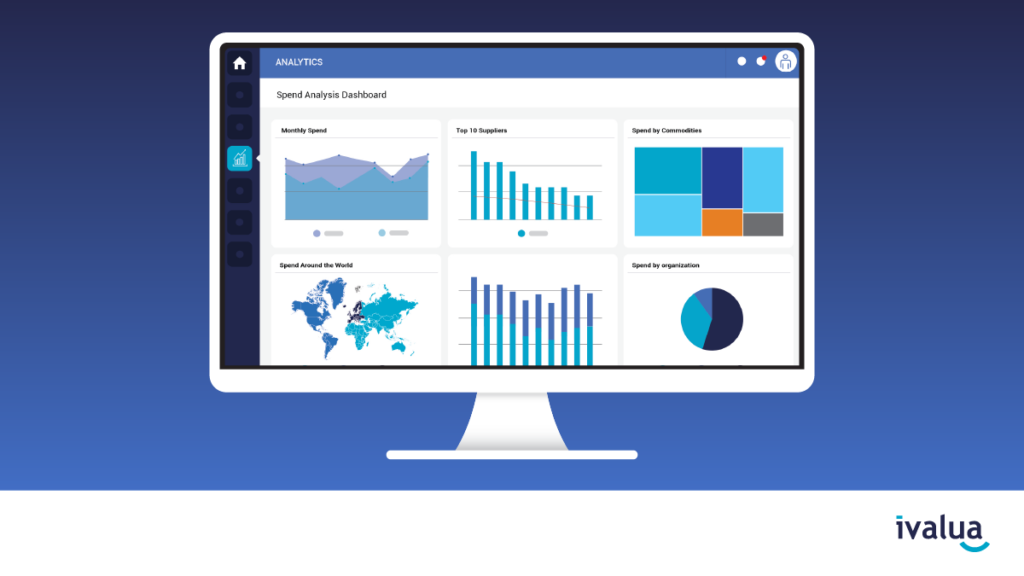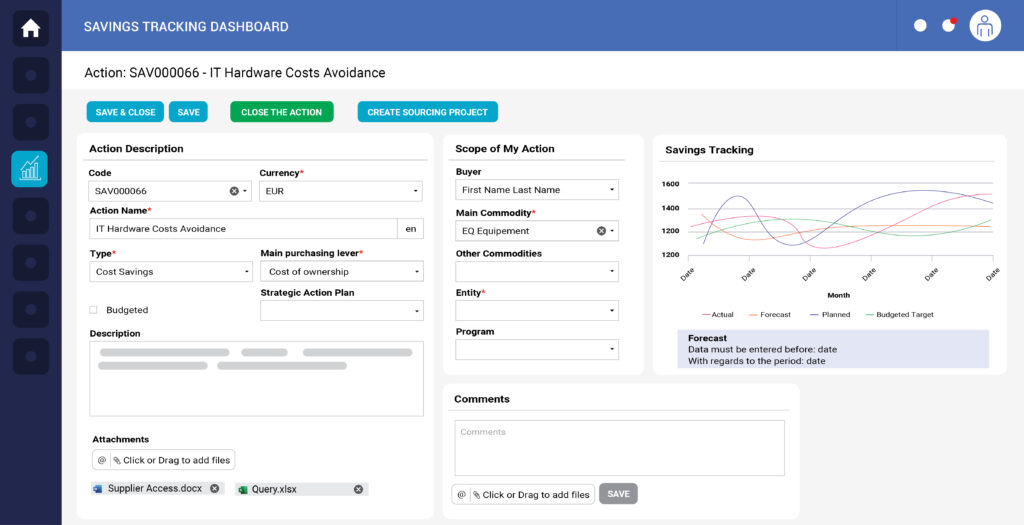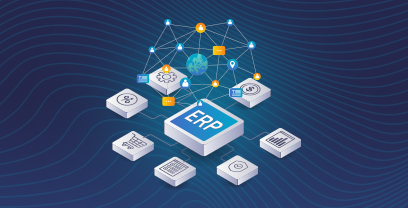Fragmented systems, rising cost pressures, and shifting risk profiles are making it harder than ever to manage procurement effectively. Strategies that worked just a few years ago are now too rigid, manual, or disconnected to keep up.
But what does it actually take to regain control and build a procurement strategy that’s both resilient and scalable?
This blog explains what a successful procurement strategy looks like in 2025, including a working definition, a strategic procurement framework, and the key steps to building one. You’ll learn how to review your current approach, pinpoint gaps, and start implementing improvements right away, focusing on automation, data visibility, and stakeholder alignment.
Key Takeaways
- A modern procurement strategy must be tightly aligned with business objectives and supported by real-time data.
- Platform-enabled capabilities like workflow automation, supplier segmentation, and performance tracking are essential for scale and resilience.
- Success depends on cross-functional collaboration, continuous improvement, and the ability to adapt quickly to shifting risk and findings from market analysis.
Effective procurement strategies are data- and performance-driven and enabled by a digital procurement platform that’s capable of integrating across systems to support enterprise-scale operations delivers measurable outcomes through automation and stakeholder alignment.

How do you begin developing a procurement strategy? Here we explain a 4-part framework that you can use to get started.
4-Part Framework for a Modernized Procurement Strategy
This framework outlines the four pillars of a modern, enterprise-grade procurement strategy:
1. Strategic Alignment and Goal Setting
Every effective procurement strategy starts with clear alignment to enterprise-wide objectives. No matter the focus, whether cost reduction and quality improvement, or supply chain optimization and resilience, procurement must have a concrete role in delivering outcomes that matter to the business.
That means defining measurable goals and leveraging spend analytics and insights to track progress over time.
2. Core Operational Focus Areas
A modern strategy must prioritize foundational capabilities, including spend analysis, vendor management, contract lifecycle management, and risk management.
These areas form the operational backbone of procurement and must be integrated within a unified platform to ensure consistency, compliance, and agility.
3. Automating Workflows and Aligning Stakeholders
Process automation is essential for reducing friction and increasing efficiency, but it must be paired with stakeholder alignment to truly drive results.
Modern procurement strategies require role-based access, flexible approval routing, and performance tracking tied to business KPIs. These may include cycle time, cost avoidance, policy adherence or others.
Platforms should support structured collaboration from intake management to invoice automation.
4. Measuring and Improving Procurement Strategy Performance
A successful procurement strategy is data-driven andsupports continuous improvement across key metrics such as cost savings, supplier performance, delivery reliability, and ESG compliance.
Regular performance reviews and feedback loops help teams and suppliers adapt to change and refine processes, so they can demonstrate strategic value to the business.
With a robust framework in place, the next step is turning strategy into action – and that’s where our step-by-step guide can help.

9 Steps to Build Your 2025 Procurement Strategy
Turning a procurement strategy into an actionable plan with real-world impact requires structured procurement planning, cross-functional coordination, and actionable steps – along with a modern AI-powered procurement platform.
Here we outline nine steps for you, to provide a roadmap to assess, strengthen, and execute your strategy in a data-driven and scalable way.
1. Define Measurable Business Objectives for Procurement
Start by aligning procurement goals with broader business priorities such as reducing COGS, improving working capital, or achieving ESG compliance targets. Clear, measurable outcomes are critical.
Goals such as “enhance supplier relationships” lack the specificity needed for accountability.
Instead, focus on metrics such as cost avoidance, on-time delivery rates, or percentage of spend on supplier diversity. Establishing this alignment early ensures that you’re tracking the performance of your procurement strategy against outcomes that leadership cares about.
2. Segment Suppliers by Strategic Value and Risk
Develop a tiered supplier management model that reflects the relative importance of each relationship. Consider dimensions such as annual spend, importance to core operations, geographic concentration, and risk exposure.
Segmentation enables differentiated supplier management strategies, such as focusing risk mitigation efforts on sole-source vendors or negotiating long-term value with strategic suppliers.
3. Map Current Procurement Processes and System Coverage
Document how procurement process activities flow across sourcing, contract negotiation, purchasing, and invoicing. Identify where handoffs occur, where bottlenecks form, and which processes are still handled manually or in disconnected tools.
This mapping exercise often reveals redundancies, gaps in accountability, and missed opportunities for automation in e-procurement. Reviewing coverage from strategic sourcing solutions and e-invoicing tools can help pinpoint where technology isn’t supporting your organization’s process maturity.
4. Strengthen Data Visibility Across Sourcing and Contracting
Procurement teams need consistent access to pricing and performance history, contract terms, and supplier risk profiles, not just at the negotiation stage but throughout the procurement lifecycle. However, in many organizations, this information lives in multiple places, making it hard to use effectively.
Centralizing data enables better sourcing decisions and improves collaboration across procurement, legal, and business other units. You can see how this applies in areas like contract lifecycle management, where visibility into obligations and clauses can influence sourcing strategy.
5. Align Sourcing Decisions with Compliance and Policy Rules
Manual reviews and policy enforcement often fall short in complex enterprise environments. That’s why embedding compliance management into intake and sourcing workflows can help reduce bottlenecks and ensure that policies are being applied consistently.
Intake management software that supports these controls can help standardize how requests are handled and who gets involved.
6. Prioritize High-Impact Categories for Strategic Sourcing
Category management involves applying strategic sourcing resources where they will deliver the most business value.
For example, focus on categories that incur significant spend, have supply constraints, or provide potential for innovation. Examples include IT, logistics, and critical raw materials. Low-risk or low-spend categories may be better suited for guided buying or catalog-driven procurement.
Strategic prioritization using category management often requires that you coordinate with other business units and leverage a unified source-to-pay platform to manage the complexity.
7. Streamline Stakeholder Engagement Across Functions
Procurement can’t do it all alone. Effective strategy execution depends on gathering input and being aligned with legal, finance, IT, and operational teams. To that end, you should build shared workflows that bring all of these teams into the process early and consistently, rather than relying on ad hoc emails or last-minute approvals.
Structured collaboration supports digital procurement transformation efforts and strengthens supply-side performance. Real-world examples, such as this case study with Körber, show how structured supply chain collaboration reduces cycle times and improves compliance.
8. Tie Reporting to Business-Critical Outcomes
Procurement dashboards often stop at activity metrics such as the number of POs issued or how many suppliers have been onboarded. While these figures provide some visibility, they don’t capture the full value procurement delivers to the organization.
Instead, focus on indicators that reflect business impact, such as cycle time reduction, savings realized versus forecasted savings, or progress toward sustainable procurement and ESG benchmarks. These metrics should be aligned with your procurement analytics tools to guide long-term improvements.
9. Pressure-Test Your Strategy with Real Risk Scenarios
Once your strategy is defined, model how it holds up under stress. What happens if a critical supplier fails? How resilient is your cost structure under inflationary pressure?
Incorporating demand forecasting, inventory management, and market analysis into your planning process will strengthen your ability to respond to disruptions. Scenario planning reveals vulnerabilities that might otherwise go unnoticed and allows for better-informed adjustments.
It’s a good idea to be familiar with supply chain risk management strategies and best practices, so you can get the most out of pressure-testing your strategy before you actually implement it.
Success Story: How Rheinmetall Scaled Up and Streamlined Procurement
Rheinmetall, a global leader in defense and civilian manufacturing, was struggling to scale its procurement operations at the pace of business expansion. Fragmented legacy processes across regions and business units were creating inefficiencies, and a major ERP consolidation highlighted the need for a unified, secure procurement system.
Rheinmetall also required a solution that could meet the distinct needs of both its defense and civilian divisions, and meet strict security and compliance mandates.
By implementing Ivalua’s unified Source-to-Pay platform, Rheinmetall was able to drive strategic procurement across its global operations. It enhanced supplier collaboration, centralized supplier risk management, and gained the spend visibility needed to support growth.
Watch the video to learn more about Rheinmetall and Ivalua.
Build a Procurement Strategy That Scales – and Delivers
A successful procurement strategy in 2025 is as much about building a connected, adaptable framework that drives measurable value across the business as it is about cost savings and contract compliance.
The framework we’ve shared in this blog supports a more resilient and performance-driven approach to the entire procurement lifecycle, from determining your goals to digitizing workflows and strong supplier relationship management.
Underpinning all of this is the need for an enterprise-grade, AI-Powered procurement platform – one that enables visibility, automation, and control at scale. Whether you’re refining an existing strategy or starting from scratch, investing in the right foundation is a critical first step.
Explore how Ivalua’s integrated platform can address gaps in existing strategy to enhance procurement processes:
FAQs around Procurement Strategy
What Is a procurement strategy?
A procurement strategy is a high-level plan that defines how an enterprise sources goods and services to achieve business goals while managing risk, controlling costs, and ensuring supply continuity.
Effective strategies are performance-driven and enabled by a digital procurement platform that’s capable of integrating across systems to support enterprise-scale operations. The platform supports data-driven decision-making and delivers measurable outcomes through automation and stakeholder alignment.
What makes a procurement strategy effective in an enterprise setting?
An effective procurement strategy aligns closely with the organization’s broader business goals, supports compliance, and drives cost efficiency. It should also enable flexibility, promote supplier collaboration, and leverage procurement technology for visibility and control.
How often should we update our procurement strategy?
Procurement strategies should be reviewed at least annually, or more frequently if there are major shifts in the market, supply chain, or internal priorities. Regular updates ensure the strategy remains aligned with business objectives and evolving risks.
Should direct and indirect procurement follow the same strategy?
Not necessarily. While they may share overarching goals, direct and indirect procurement often require tailored approaches based on different stakeholders, timelines, and cost structures. A unified strategy can offer consistency, but execution should reflect category-specific needs.
What’s the difference between strategic sourcing and procurement strategy?
Strategic sourcing is a tactical component focused on supplier selection and cost optimization, whereas procurement strategy defines the overall vision, priorities, and long-term goals of procurement. In other words, strategic sourcing is one tool used to execute a broader procurement strategy. Learn more about strategic sourcing vs procurement.
How do we measure the success of a procurement strategy?
Success is typically measured by cost savings, supplier performance evaluation, risk mitigation, and alignment with business goals. Additional KPIs may include contract compliance, cycle times, and stakeholder satisfaction across the enterprise.
Further Reading
Source-to-Pay vs. Procure-to-Pay: Understanding the Differences
Procurement Technology: Enterprise Solutions Driving Efficiency and ROI
What is Procurement? Types, Process & Solutions
Procurement Transformation Roadmap: Driving Greater Productivity Through Digitization




